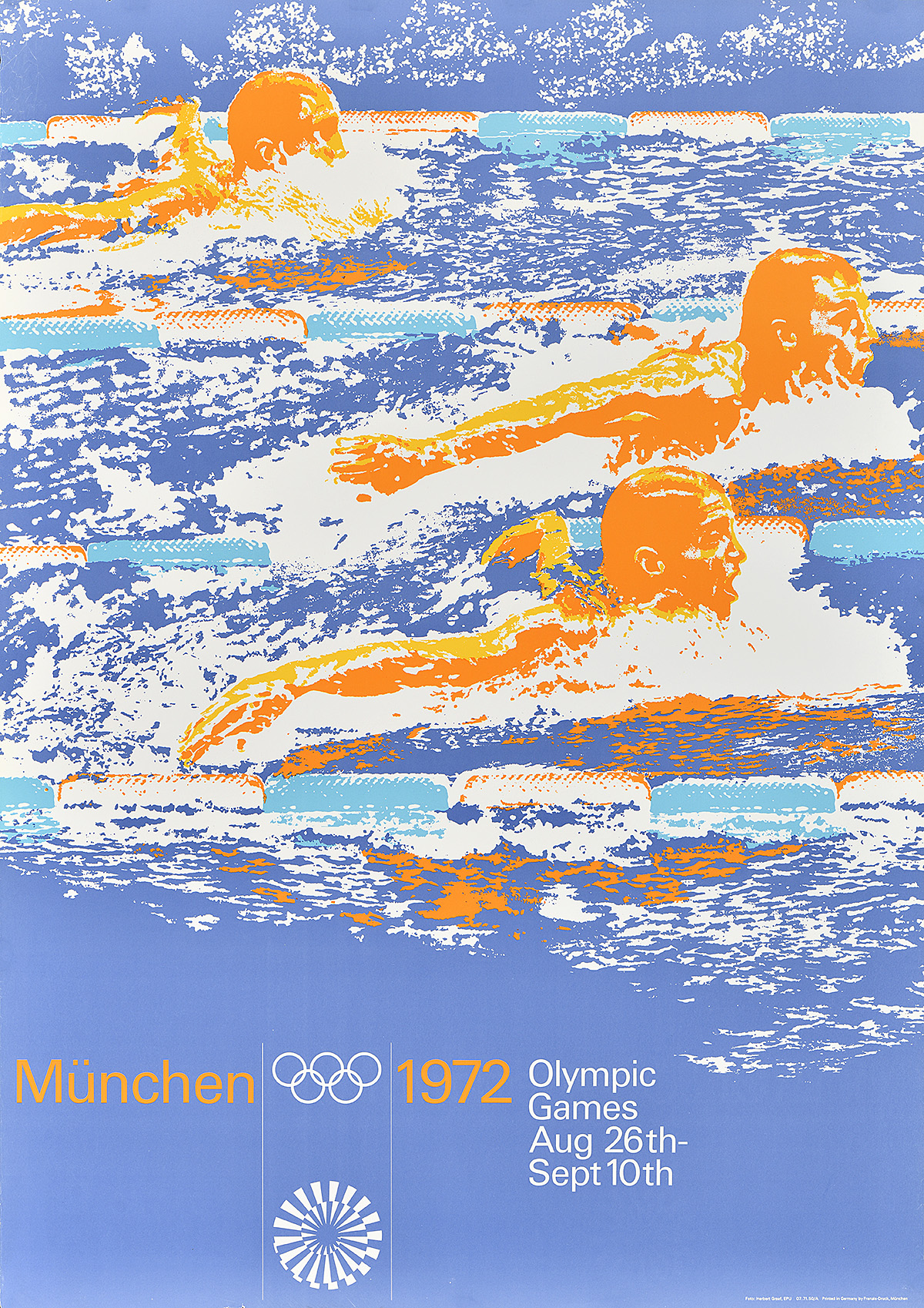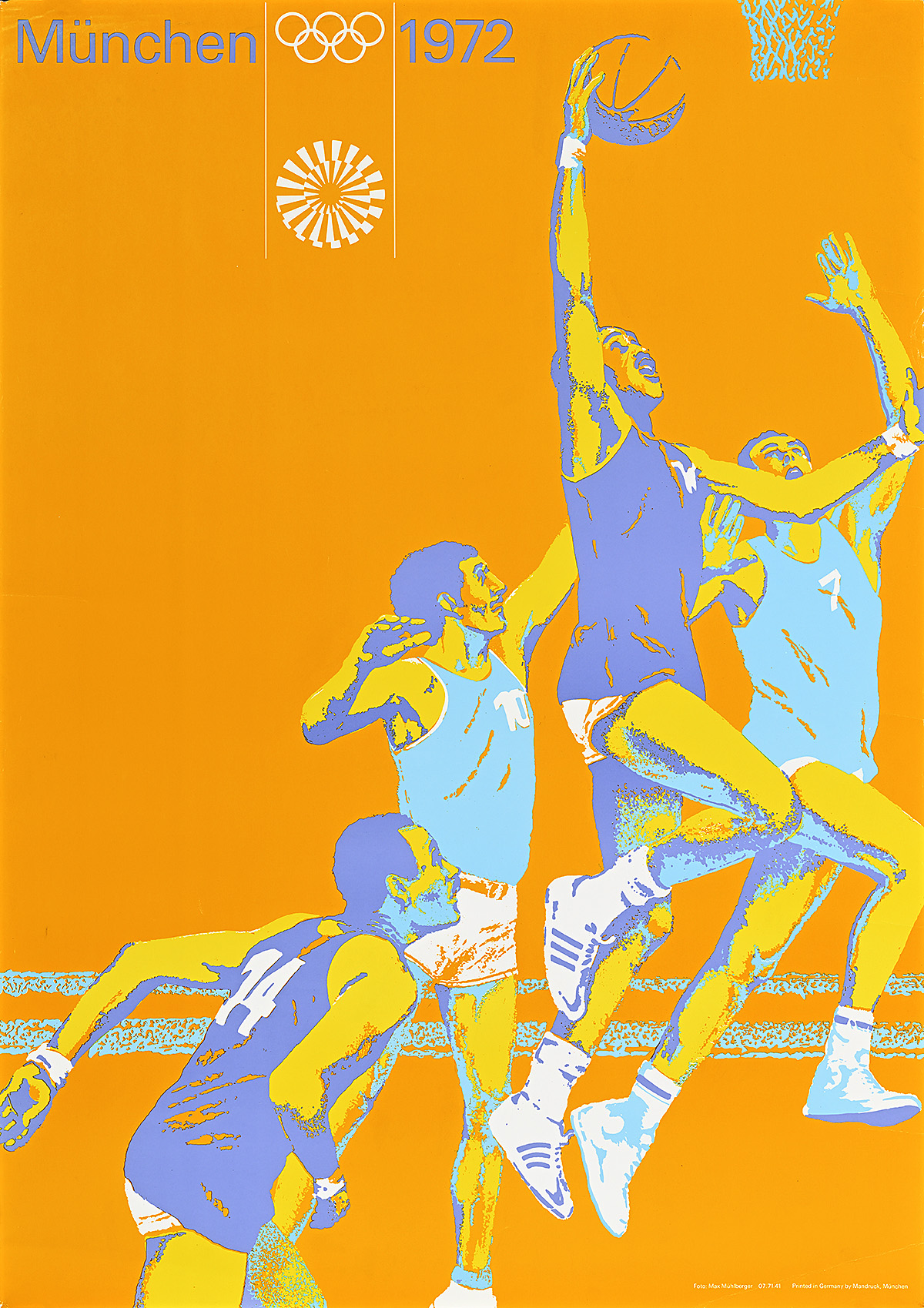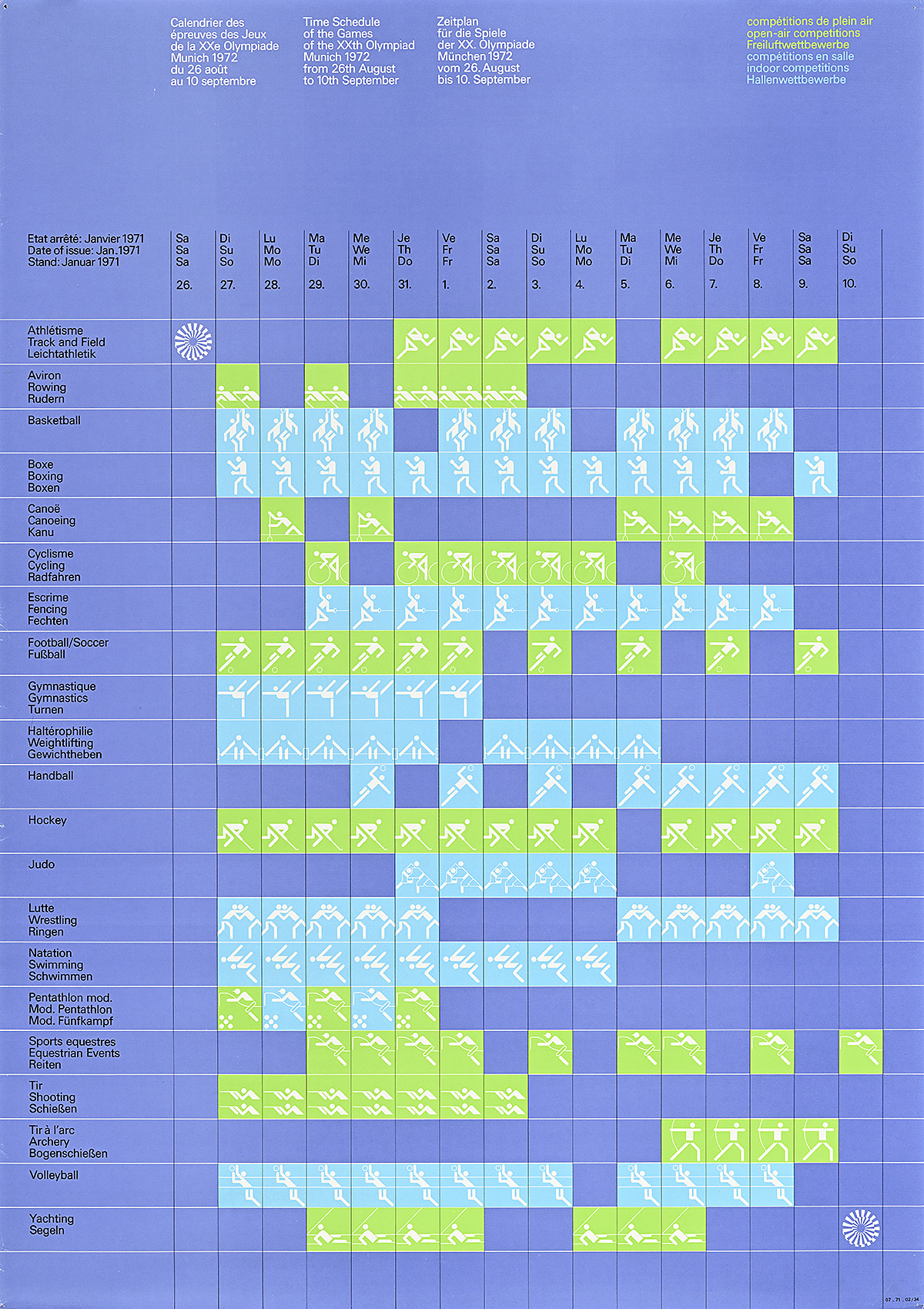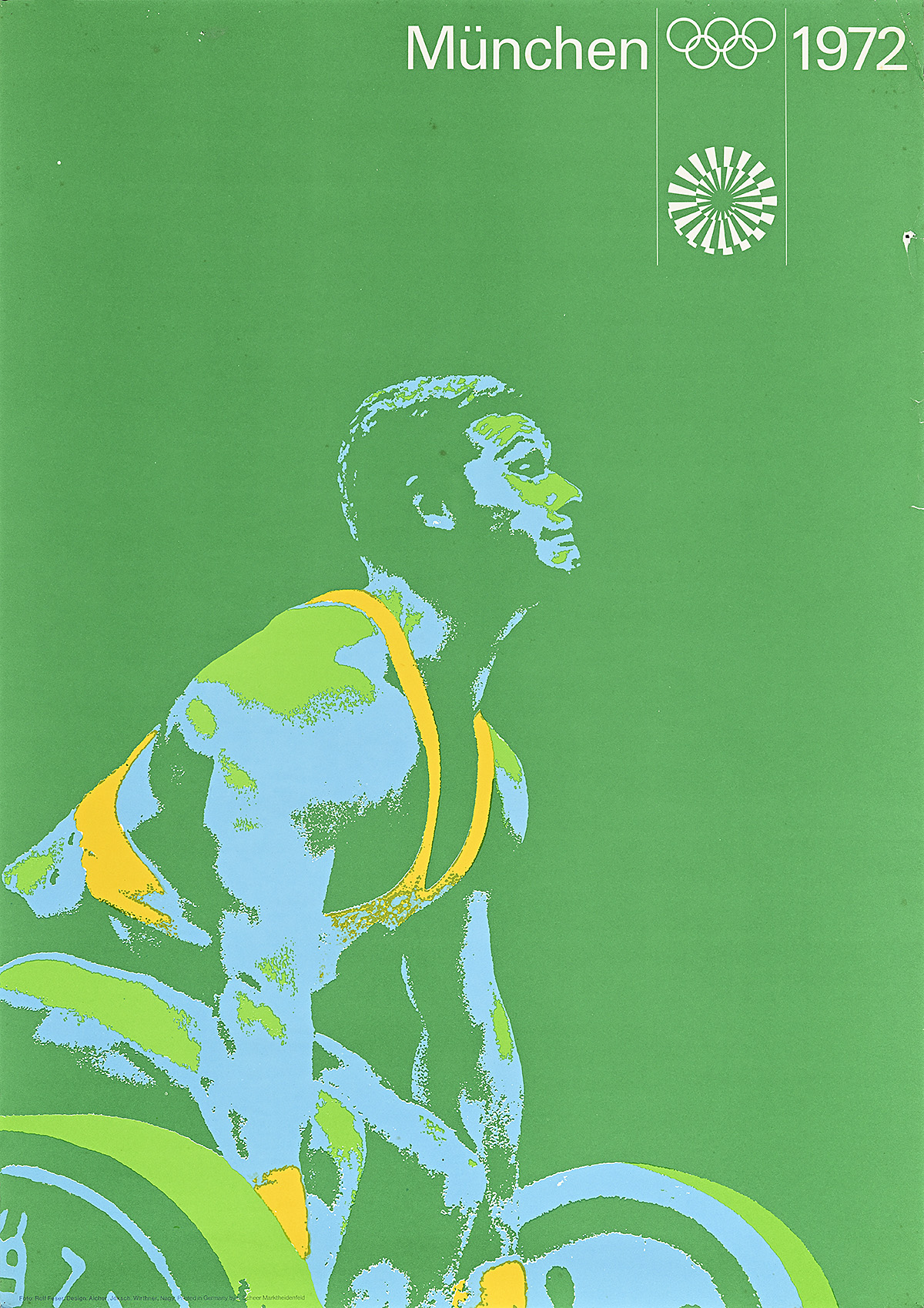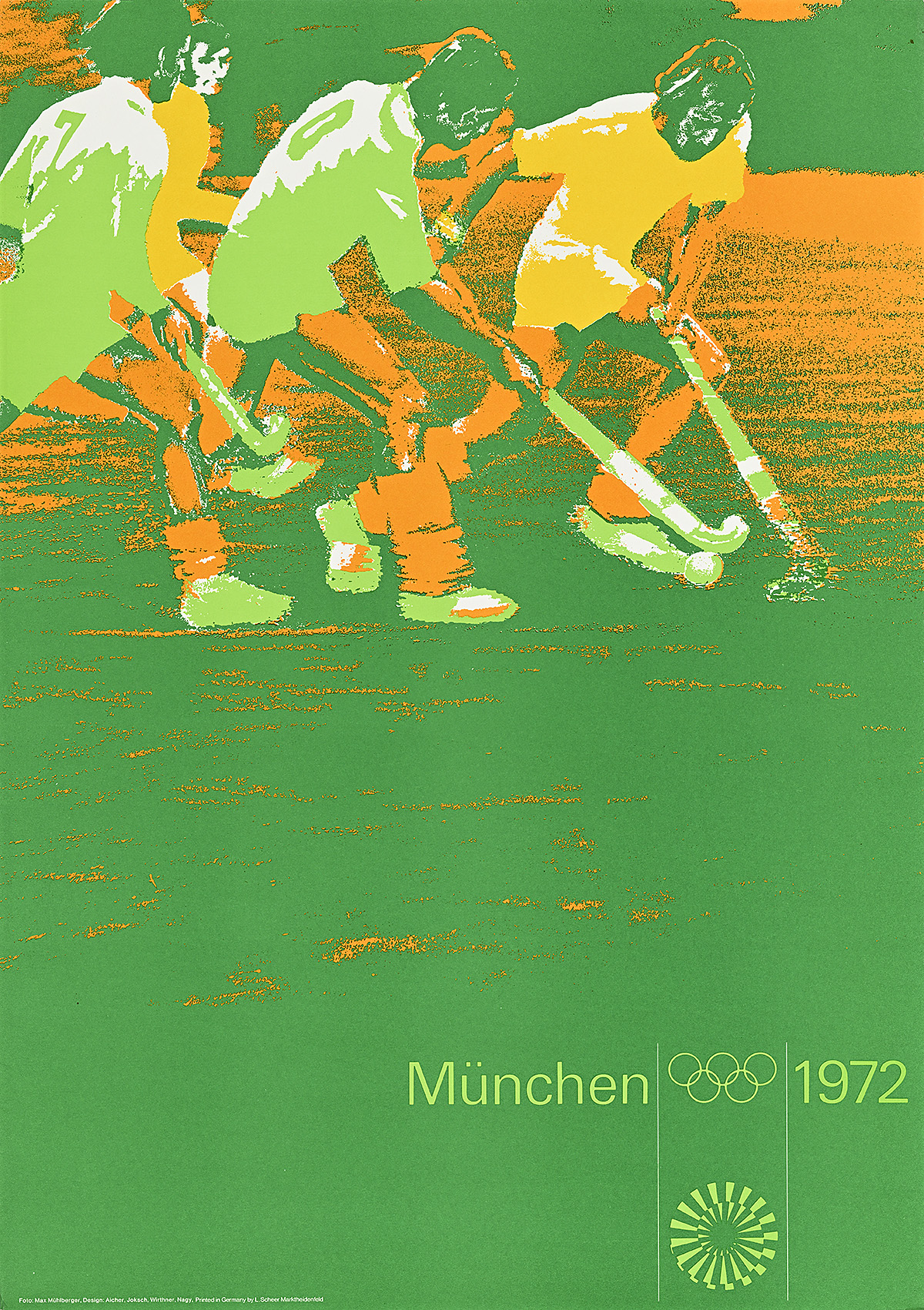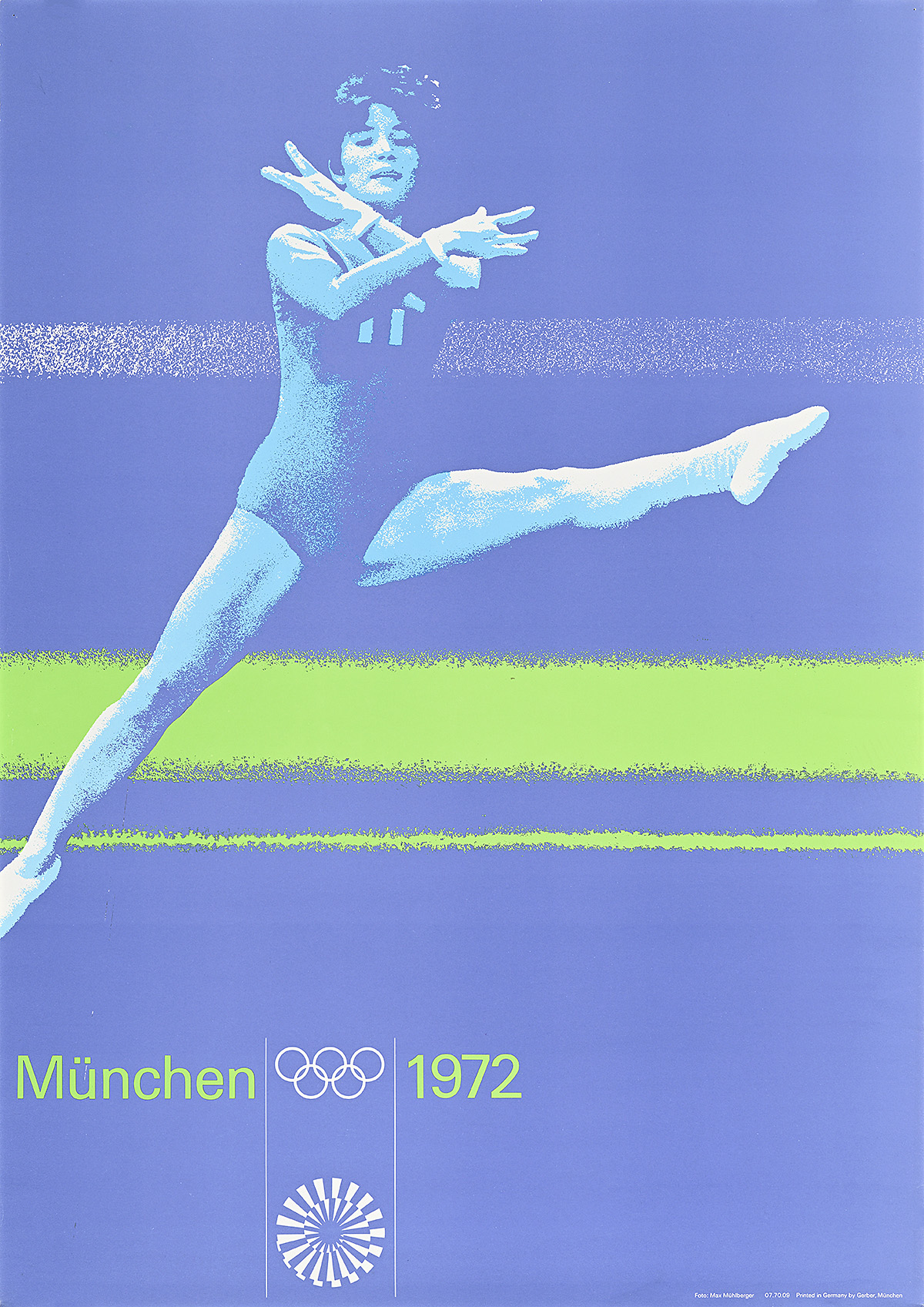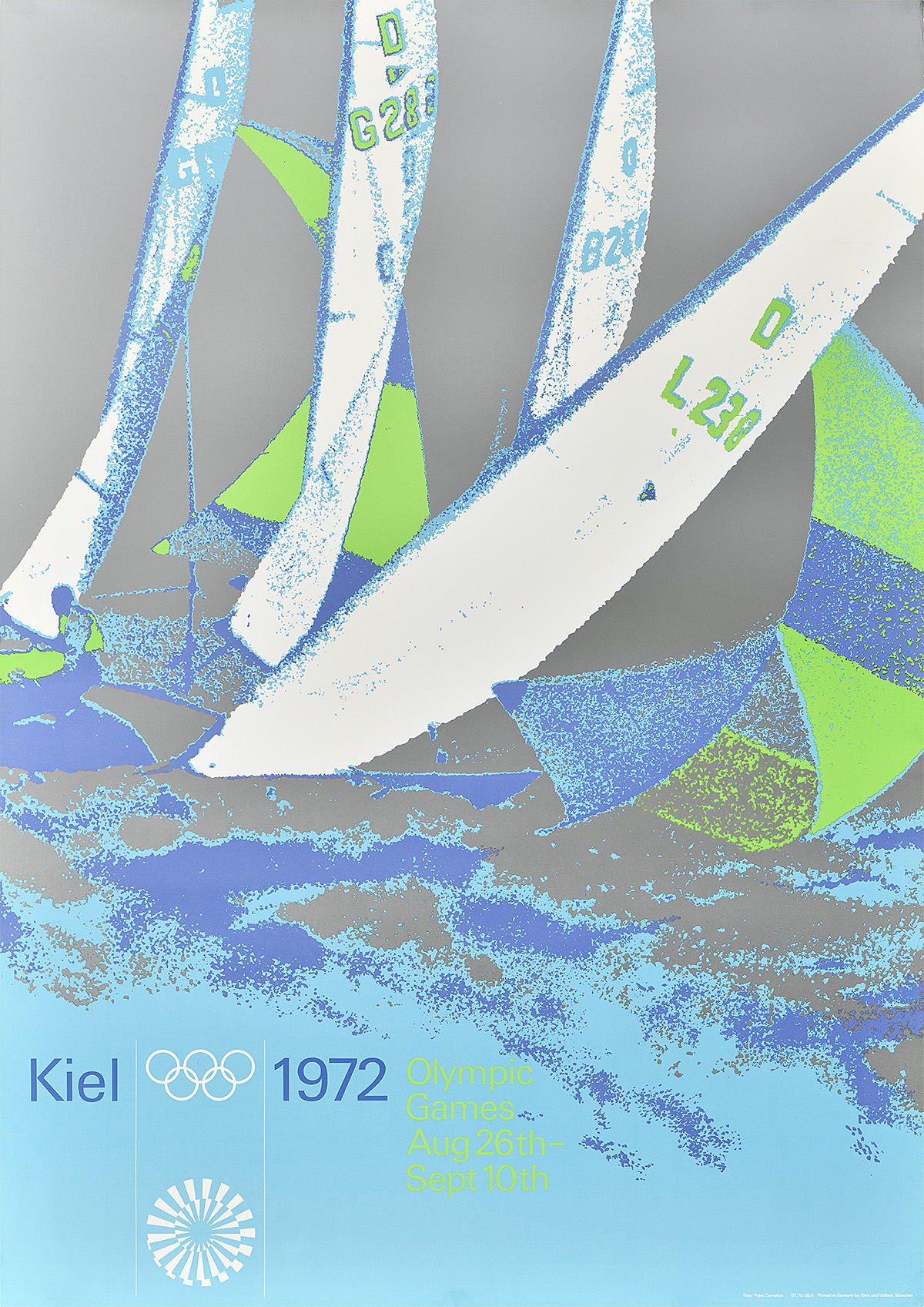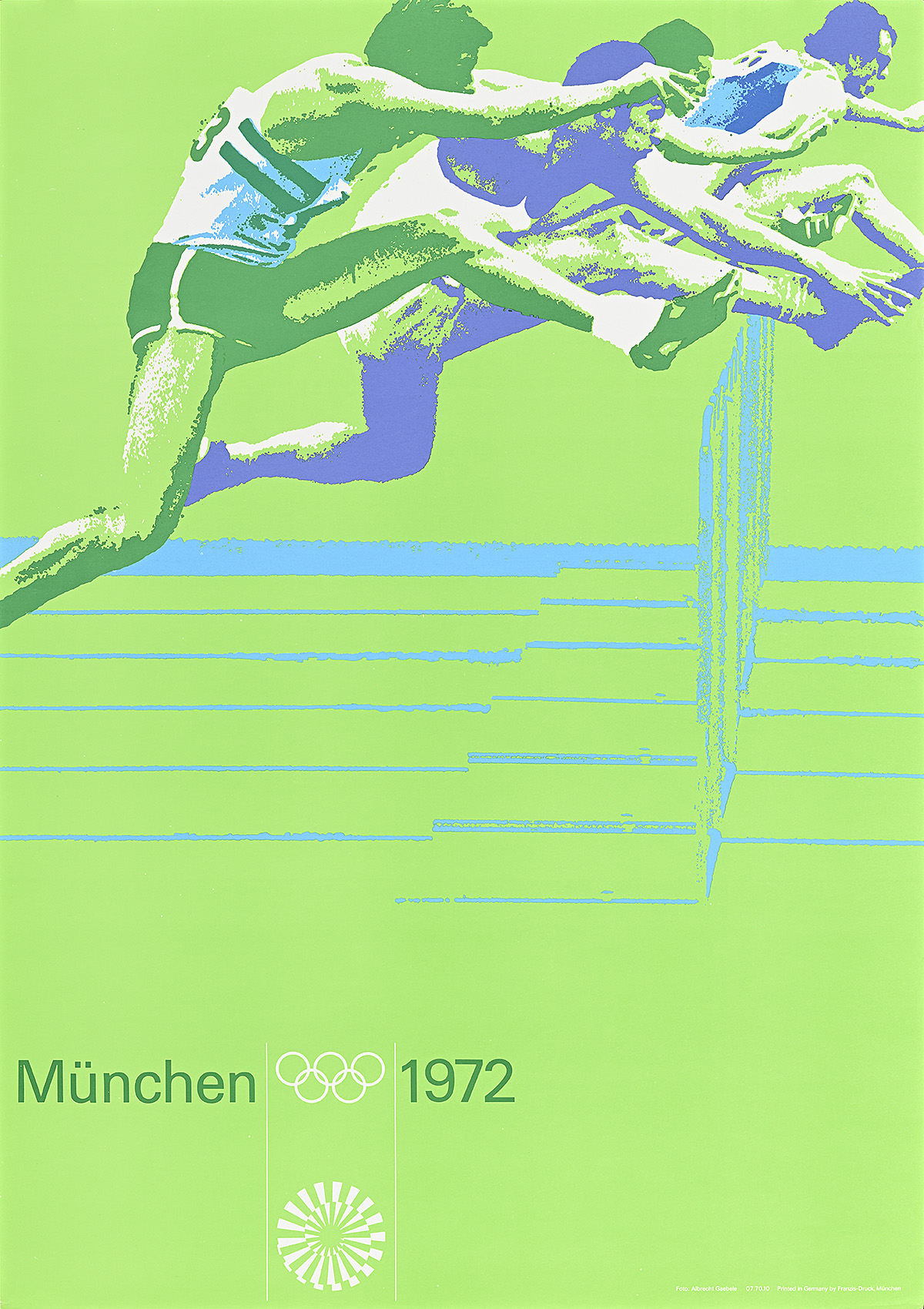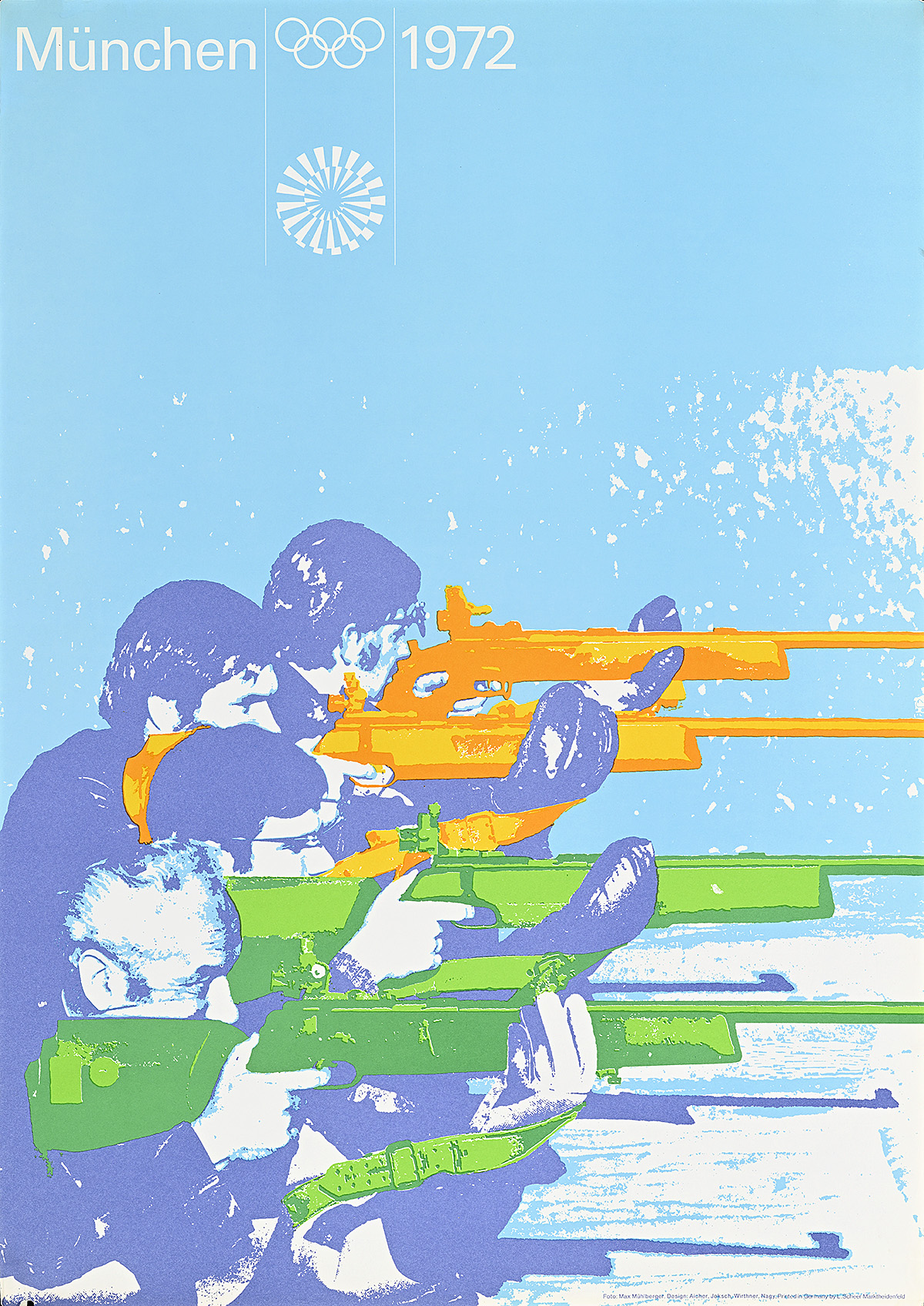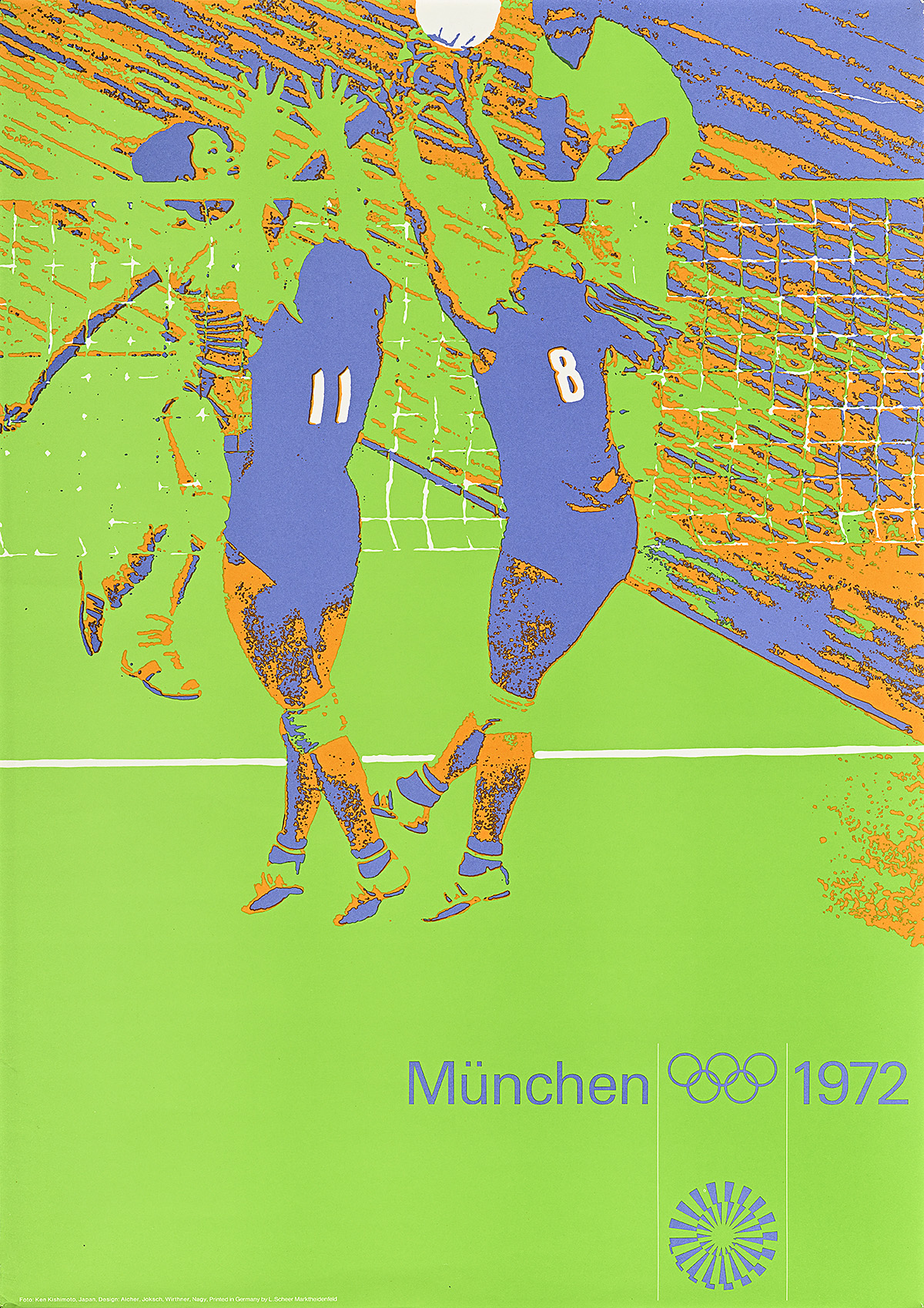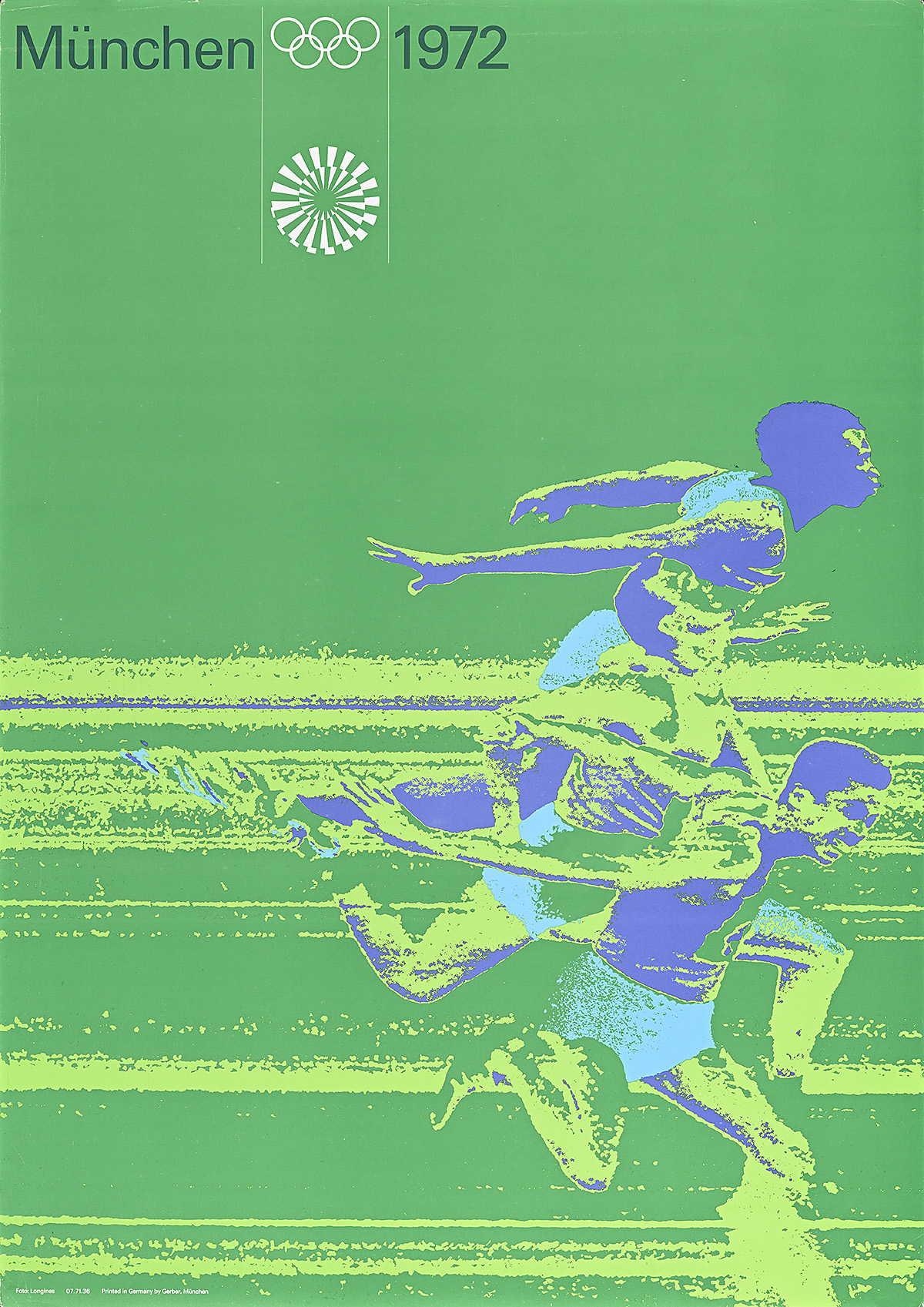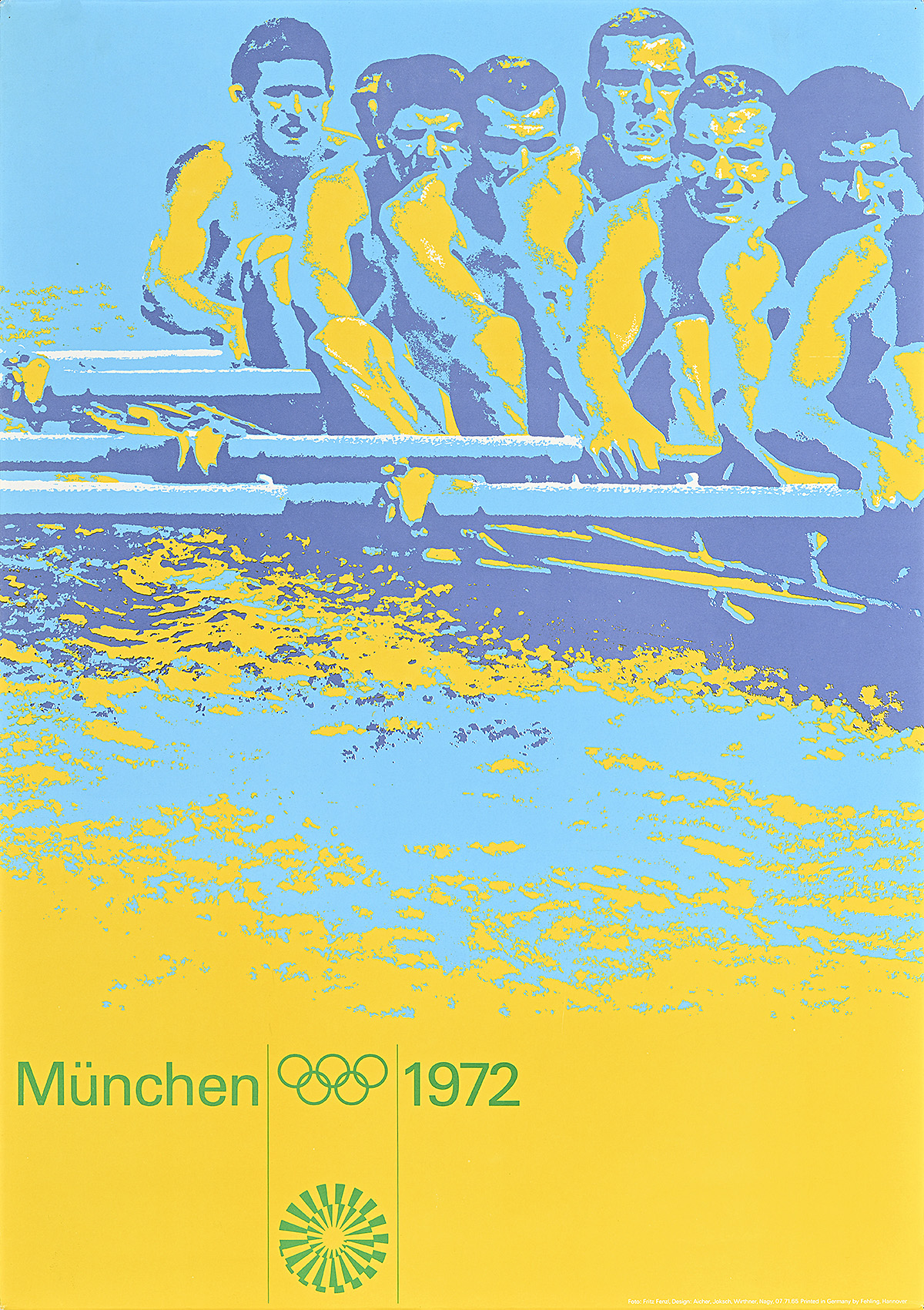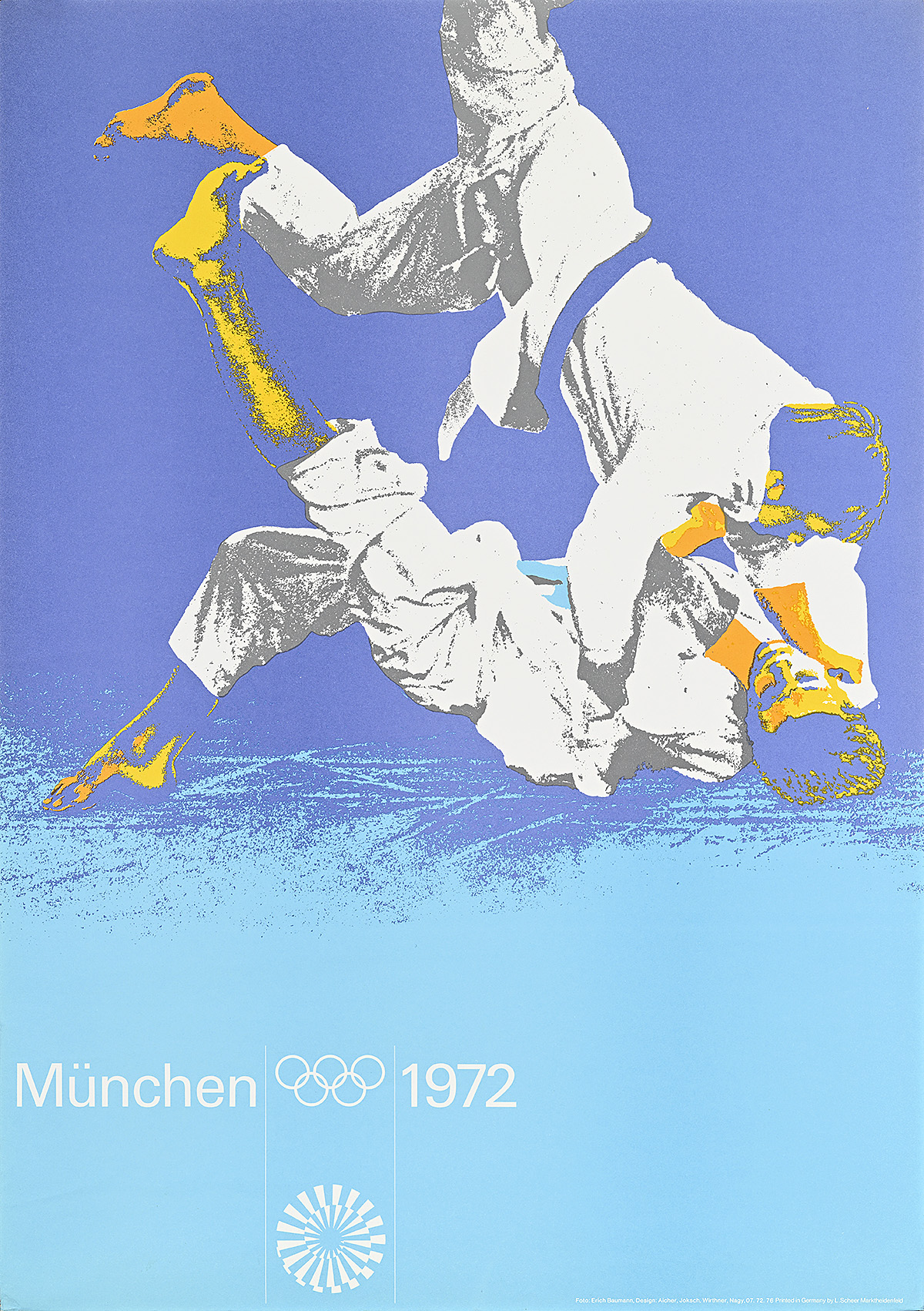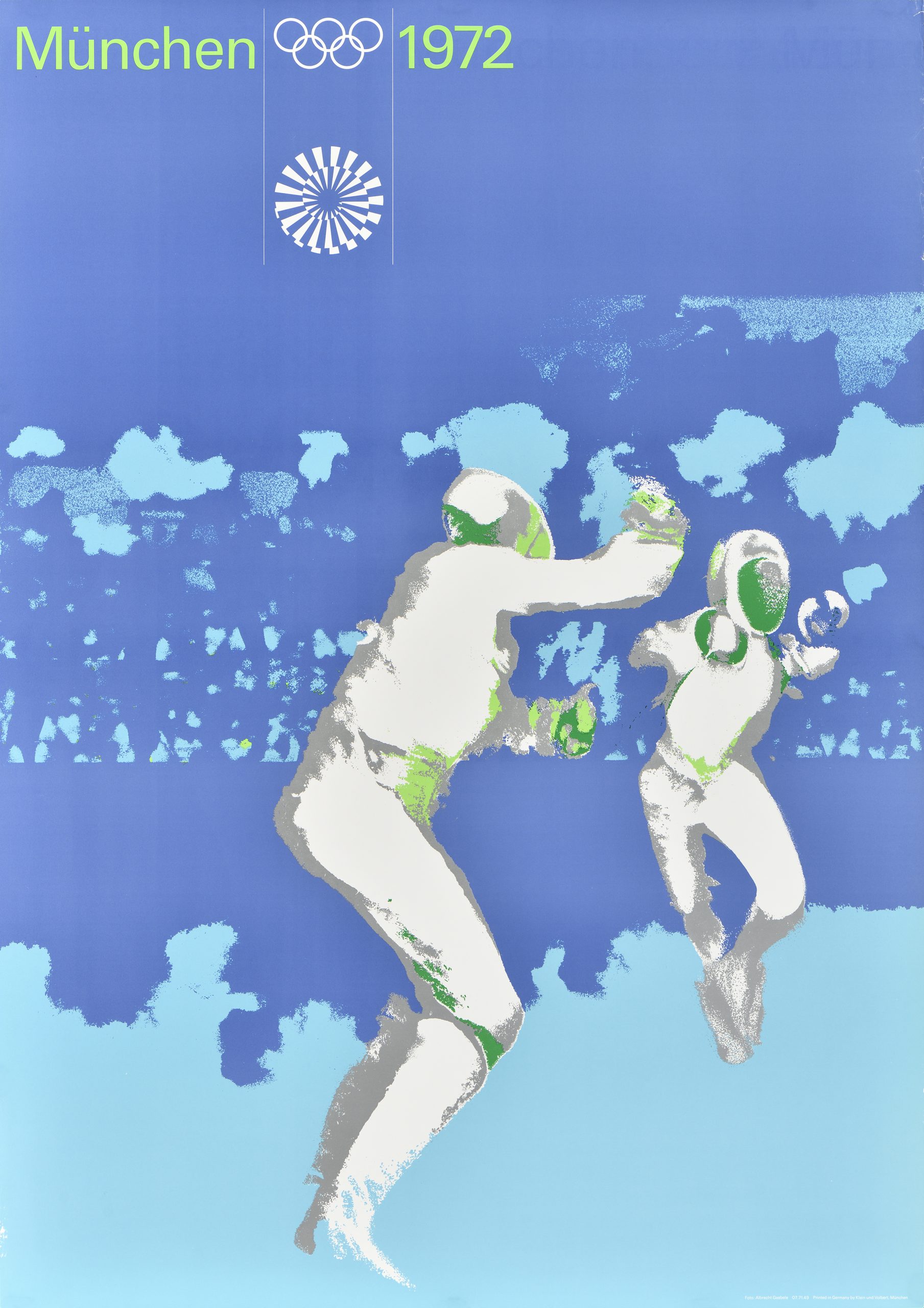Munich 1972: Sports Posters of the XXth Olympic Games
Intro
Design has been at the heart of the Olympics for more than one hundred years, beginning with the five interlocking, multicolored rings that have been the official symbol of the Games since the 1920s. They were designed by Baron Pierre de Coubertin, founder of the modern Olympic Movement. Based on patterns common in ancient Greece, the five rings represent Africa, the Americas, Asia, Europe, and Oceania; every national flag in the world includes at least one of the five colors. Ever since, the Olympic Games have been an occasion not only for athletic achievement but also for remarkable efforts in art, architecture, and graphic design.
There is much debate about which Olympics featured the best design, with Mexico City (1968), Los Angeles (1984), Barcelona (1992), and Grenoble (1968) each drawing enthusiastic advocates; however, there ultimately seems to be a broad consensus around the graphic program created for the XXth Olympiad held in Munich, West Germany, in 1972. This program, usually attributed to a single, visionary creative director, Otl Aicher, was, in fact, created by a team of designers who worked tirelessly on every detail of it for nearly six years. The result was a fully coordinated, rigorously executed, totally unified scheme that set a new standard for the design of the Games. It became an influential model not only for the design of sporting events but also for comprehensive identity programs of any kind.
The posters exhibited here show the design scheme created for the 1972 Munich Olympics at its best, one for each event, each capturing both a moment in time and making a bid for permanence. Together, they demonstrate a magically calibrated balance of consistency and surprise, control and power, precision and exuberance, much like those of the athletes they celebrate.
Curation
Michael Bierut
Design
Ola Baldych
Special Thanks
Mark Holt, author, Munich ’72
Robert Probst, designer
Catherine Bindman, editor
Anita Sheih, proofreader
Sofía Jarrín, Spanish translator
All posters on display are from the Poster House Permanent Collection through a generous donation from Thomas Strong. These silkscreen posters were designed between 1970 and 1971 by Gerhard Joksch, with Nanke Claassen, Sepp Klement, György Nagy, Gabriele Pée, and Henri Wirthner under the direction of Otl Aicher and based on photography by Erich Baumann (canoeing, handball, judo, wrestling) and Max Mühlberger (basketball, shooting, field hockey, gymnastics, archery). Additional photography credits include Herbert Graaf (swimming), Dieter Frinke (soccer), Peter Cornelius (sailing), Albrecht Gaebele (track and field, fencing), Otto Hesse (boxing), Ken Kishimoto (volleyball), Fritz Fenzl (rowing), Longines (pentathlon, cycling), and Rolf Feser (weightlifting).
Whenever feasible, Poster House reuses materials from previous shows to drive sustainable practice.
Large text is available at the Info Desk.
Guías con letra grande están disponibles en atención al público.
